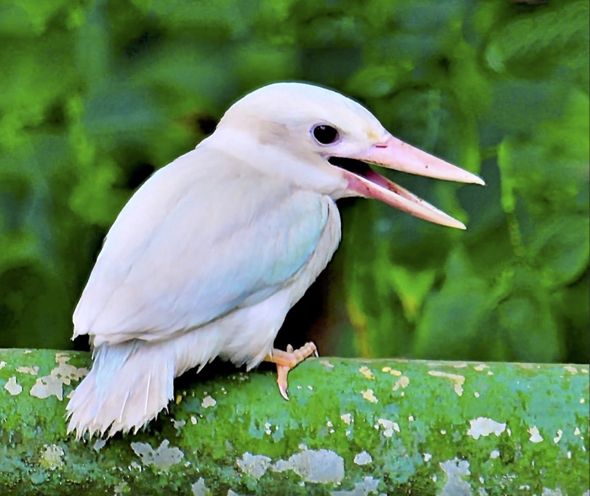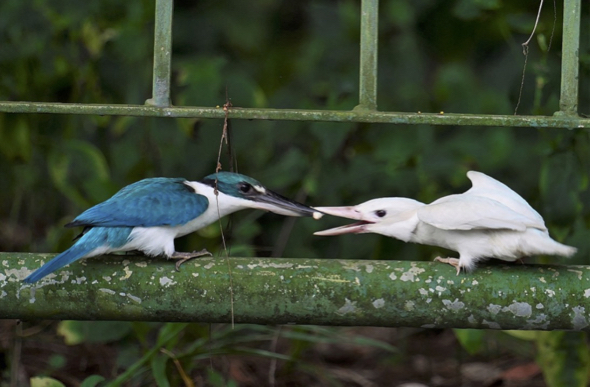
The June 2018 sighting of a pair of adult Collared Kingfishers (Todiramphus chloris) feeding a leucistic fledgling caused much excitement among nature photographers LINK. After all, it is not often that we can witness such a scene.

A number of questions come to mind regarding the above…
1. Do birds recognise their newly-fledged chicks, especially when they are leucistic and thus appear different? Obviously, they do recognise them as we often see such leucistic birds around. But does this mean that there are no cases of adults abandoning their leucistic fledglings?
2. Adults that do recognise their leucistic fledglings, is it by their begging calls, rather than appearance? The few cases of reported adult leucistic birds being chased off by their conspecifics in a group may indicate otherwise LINK, although there are reported cases where such birds were accepted by the rest of the flock LINK.

3. It is possible that the parents of the leucistic birds may have been hardwired to feed their fledglings… as otherwise the latter would not be able to survive. This is because a recently fledged chick is totally helpless by itself… being unable to feed itself, to recognise predators and how to avoid them, etc.

4. Obviously, there is an urgent need for nature enthusiasts to be more vigilant while out in the field to look out for leucistic birds and document their behavior, be it with conspecifics in a flock or between adults and their recently fledged leucistic chicks.
YC Wee & Johnny Wee
Singapore
4th December 2018








